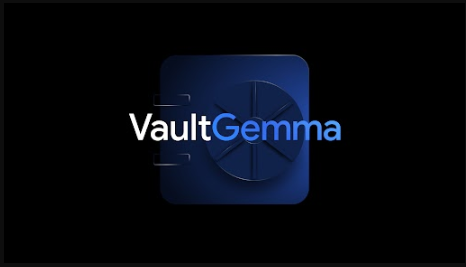2025市場でAIが主役に—バフェットが大勝負、Nvidiaが革新を推進、プライバシーとガバナンスがスポットライトを浴びる
Author: Staff Writer

人工知能の革命はもはや技術系ブログや四半期決算の発表に限定された推測的テーマではない。2025年には、AIは hype からインフラストラクチャへ移行しており、資本、政策、そして消費者の感情が、いくつかの変革的なアイデアに合わせてそろっている。中でも最も重要なのは、ウォーレン・バフェットが公表した、わずか2銘柄のAI株への680億ドルの賭けだ—この動きは、世界で最も有名なバリュー投資家が、よく懐疑的に扱われる技術に対して適用する覚悟と忍耐を示している。この賭けは、AIの上昇益に対して信頼できる耐久性のあるエクスポージャーを求め、急速な技術変化に伴うシーケンスリスクを管理する経験豊富な投資家の市場全体の物語の焦点となっている。
バフェットのアプローチ—長期的視点、ファンダメンタルズ重視、明確な経済的 moat を備えた勝者を選ぶことを好む点—は、高成長技術株が時に特徴づける狂乱的なモメンタム取引とは対照的だ。しかし、彼が公表時点で狙っている2銘柄のAI株は公衆の話題では未だ名指しで、AIが普及している世界でも投資家は依然として選択性を求めていることを思い出させる。重要なのは、AIに関するエッセイの数だけでなく、ビジネスモデルの質、競争優位性の持続性、アルゴリズムの力を長期にわたり実際の利益へ転換する能力だ。ある意味で、バフェットの賭けは、この時代の中心的緊張を体現している:AIによる破壊は、より大規模なプラットフォームの永遠のレースとなるのか、それとも既存企業がAIを活用してキャッシュフローとレジリエンスを改善する、より持続可能な改良版になるのか。

ウォーレン・バフェットの2銘柄への大胆な賭けは、AI対応の耐久的成長への顕著な転換を際立たせている。
Beyond the headlines about Buffett, other high-profile drivers of AI liquidity and risk-taking are on display. Nvidia, long regarded as the semiconductor backbone of modern AI, features prominently in investor conversations even when its name does not appear in Buffett’s shortlist. In a market where AI software and hardware are increasingly interdependent, investors note that Nvidia-related opportunities extend beyond one stock to a broader ecosystem. Recent reporting highlights that Nvidia has about $4.3 billion invested in a handful of AI-related stocks—across six companies—an allocation that signals the resonance of Nvidia’s software and chip cycle across portfolios. The story is not simply about a single company performing well; it’s about the AI value chain maturing into a recognizable asset class with recurring revenue streams, platform ecosystems, and the potential for capital-efficient growth. Meanwhile, central banks and macro policy continue to shape the risk appetite around these investments. The Federal Reserve’s guidance, as reflected in market commentary, looms over how investors price AI exposure in real terms, while major markets from London to Tokyo keep an eye on the global liquidity environment.
AI投資の勢いの視覚表現、チップ manufacturersとソフトウェアプラットフォームが資本の流れの中心に。
The consumer-facing front of AI—apps and experiences that everyday users interact with—also reveals tensions between speed, access, and governance. A recent episode around Google’s Gemini climbing to the top of Apple’s App Store free app rankings and related discussions about alleged rigging illustrates how AI-enabled products are increasingly battlegrounds for platform power, consumer trust, and regulatory scrutiny. Elon Musk’s public salvo accusing Apple and OpenAI of colluding to manipulate rankings underscores that the AI ecosystem is not only a laboratory of algorithms but a theatre of competition where legal risk and reputational considerations can influence strategy as much as technical capability. The confluence of consumer apps, platform governance, and potential anticompetitive behavior highlights a broader trend: AI’s mainstream adoption depends as much on open, fair access to distribution channels as it does on breakthroughs behind the scenes.

Google’s Gemini uplift in App Store rankings becomes a flashpoint for debates over app-discovery and platform fairness.
In enterprise security and risk management, AI continues to extend its reach from analytic corners to mission-critical pipelines. SentinelOne’s announcement of acquiring Observo AI to enhance its security telemetry pipeline reflects a broader push to weave AI-native data into threat detection, incident response, and compliance workflows. Fenwick & West LLP’s representation of SentinelOne on the deal signals the gravity of these transactions in the legal and regulatory context—where deals are not only about technology fit but about risk allocation, data governance, and the ability to scale privacy-conscious data processing across heterogeneous networks. As AI becomes embedded in security operations, firms face rising expectations to protect sensitive information while extracting actionable insights from vast telemetry streams.

VaultGemma—Google’s differential privacy-driven LLM represents a frontier in privacy-preserving AI.
The privacy dimension of AI is not theoretical. A landmark development in differential privacy and privacy-preserving AI includes VaultGemma, described as the world’s most powerful differentially private LLM. Built on Google’s Gemma architecture, VaultGemma aims to shield sensitive data and reduce disclosure risk even as AI systems learn from large-scale datasets. This is not a marginal improvement; it is a reorientation of what it means to train and deploy LLMs in environments that require strong guarantees about data privacy. The practical implications span regulated industries—healthcare, finance, and government—where compliant handling of personal information is non-negotiable. Yet, the challenge is substantial: preserving privacy often comes at the cost of model performance, requiring sophisticated techniques and careful trade-offs in the training process.

VaultGemma demonstrates how differential privacy can reshape the capabilities and governance of large language models.
In a parallel development, the enterprise security space is watching how AI can be harnessed to protect, rather than just analyze, data flows. The SentinelOne deal with Observo AI is part of a broader market where AI-driven telemetry and anomaly detection are becoming standard requirements for modern security stacks. The acquisition points to a future in which security providers must not only respond to threats but also ensure that sensitive telemetry itself is governed by privacy-preserving techniques and auditable controls. As enterprises accelerate AI adoption, governance frameworks will increasingly influence which vendors win the race to provide integrated, compliant AI-powered security infrastructures.

OpenAI’s new coding paradigm — ‘New Code’ — could elevate the role of spec authors in AI-driven development.
A broader developmental shift is unfolding as well. OpenAI’s reported emphasis on a “New Code” approach suggests a move away from ad hoc prompts toward structured specifications that govern AI-driven software construction. Analysts and developers are watching how this shift could elevate the status of spec authors—the people who write the blueprints that guide AI systems and the developers who implement them. The idea is to translate business requirements, safety constraints, and user experience goals into concrete, machine-readable specifications that reduce ambiguity and create a shared language among stakeholders. If this trend accelerates, it could redefine the most valuable skill in AI-enabled software development: the ability to design precise, verifiable specs that align teams across product, engineering, and governance.

OpenAIの新しいコーディングパラダイム「New Code」は、AI駆動開発における仕様作成者の役割を引き上げる可能性がある。
Beyond engineering practice, a broader geopolitical and governance conversation is taking shape around “sovereign AI.” Gartner’s assertion that sovereign AI and agents could reshape global government services points to a future where automated decision-making and AI-enabled workflows become central to public administration. The idea is not merely about building domestic AI capabilities; it is about ensuring that AI systems operate within trusted, policy-driven boundaries that respect national sovereignty, data localization requirements, and public accountability. Governments are experimenting with AI agents to handle routine tasks, triage information, and support complex policy simulations, all while balancing concerns about transparency, bias, and security.
Market observers have also begun to entertain explicit long-horizon forecasts about AI-driven equities. A controversial but widely cited piece suggested that a certain AI stock could surpass Palantir’s value within three years, underscoring the market’s willingness to place top-dollar bets on AI-enabling platforms that promise outsized returns. While such predictions are speculative, they reveal the market’s perception of AI as a category capable of delivering exponential appreciation—so long as the underlying business economics justify the valuation and the technology remains on a sustainable trajectory.
Looking ahead, several themes are likely to shape the AI investment and development landscape over the next 12 to 24 months. First, the AI hardware-software cycle will continue to mature, with demand for chipmakers, infrastructure software, and platform services creating a broad base of opportunities. Second, privacy and governance will grow in importance as more organizations deploy AI at scale and must balance innovation with compliance. Third, the dev bar may shift to a more structured, spec-driven culture that aligns technical work with practical outcomes and risk controls. Finally, government adoption of AI-enabled services and agents will become a more visible and contested front in the policy arena, influencing funding, procurement, and international collaboration. Taken together, these forces suggest a future in which AI is a mature, multi-trillion-dollar ecosystem rather than a transient trend.
In sum, the AI moment is characterized by big bets, enduring technical advances, and a layered governance landscape. Buffett’s headline wager reflects a market that prizes durability and scale, while Nvidia’s ecosystem-building work underscores the ongoing demand for AI acceleration. At the same time, breakthroughs in privacy-preserving AI, corporate security, developer tooling, and sovereign AI governance reveal a broader, multi-faceted transformation in which AI touches nearly every sector. For investors, technologists, policy-makers, and the general public, the coming years will test not only the speed of AI progress but the wisdom with which society channels its benefits.